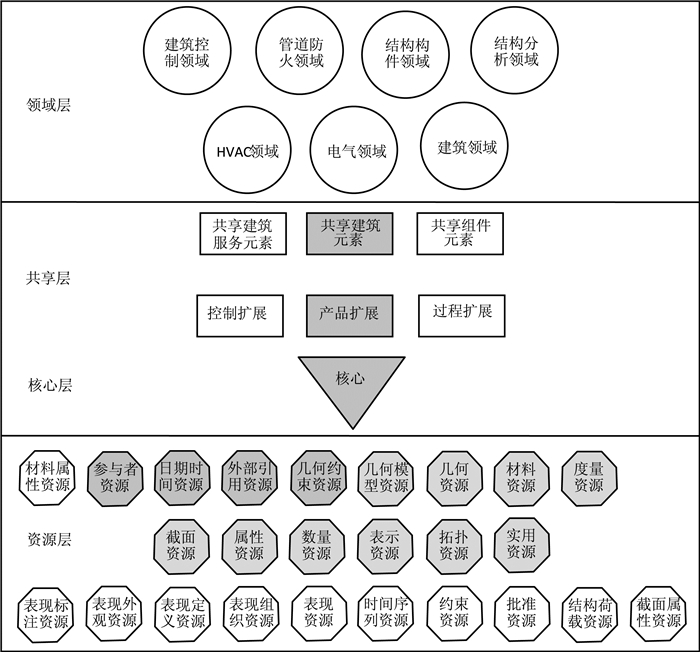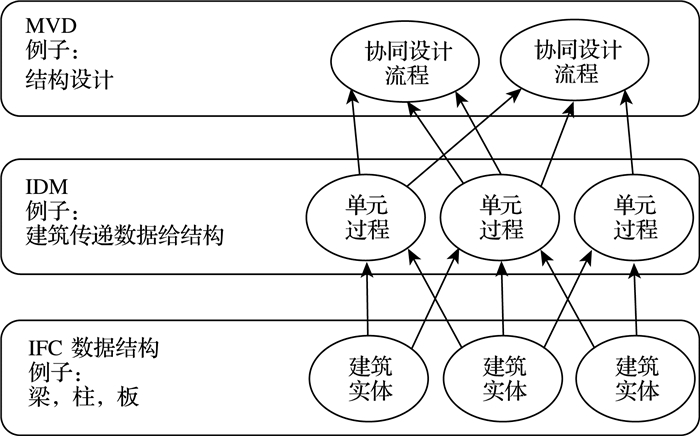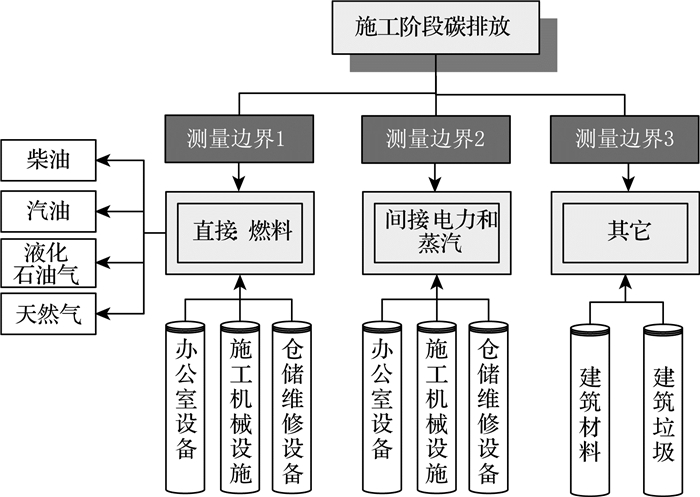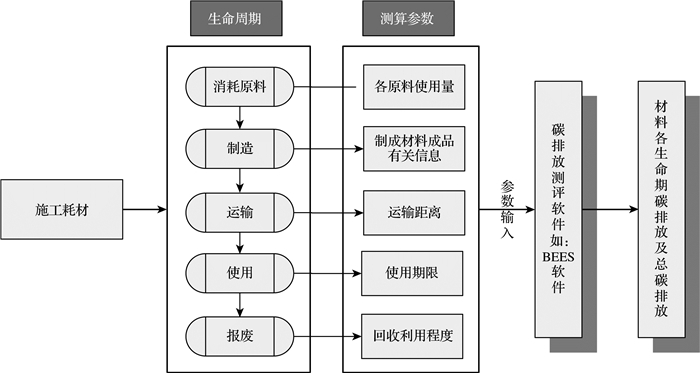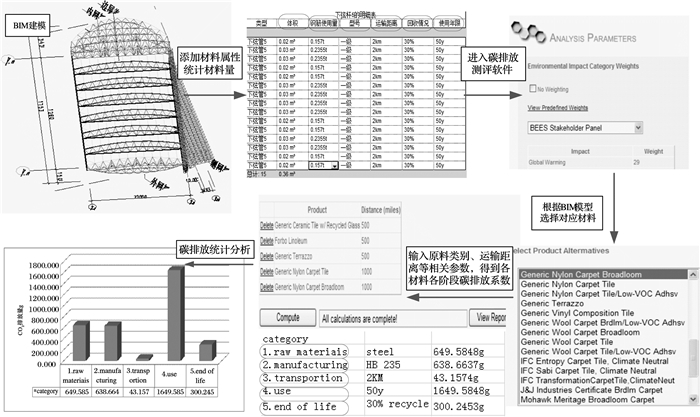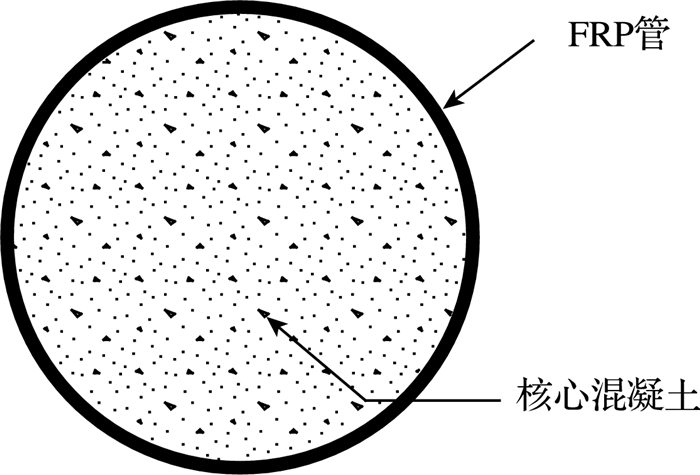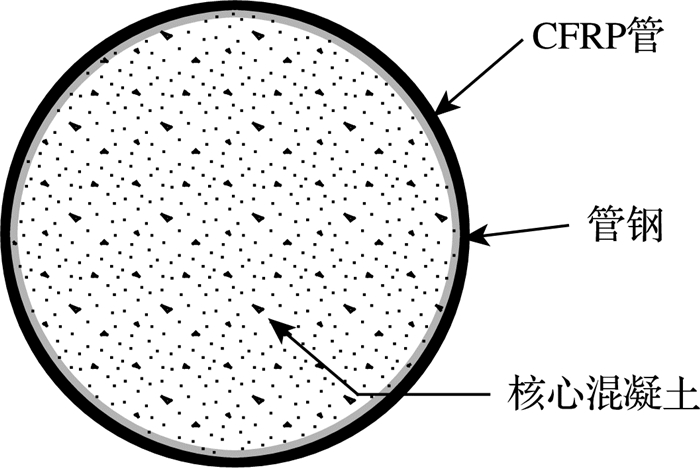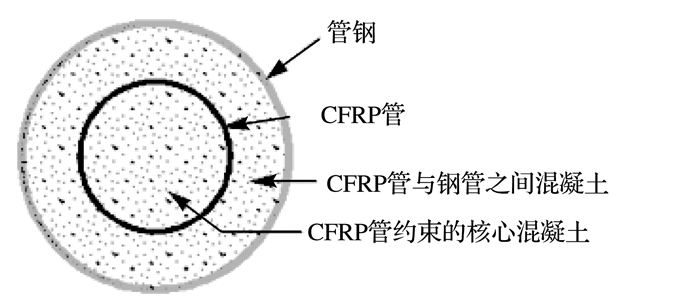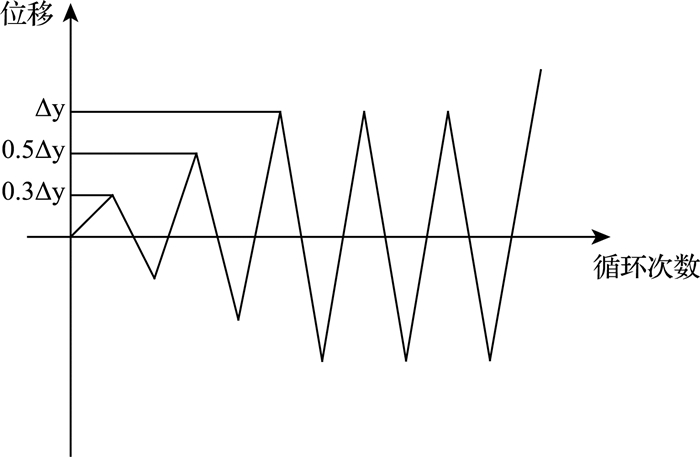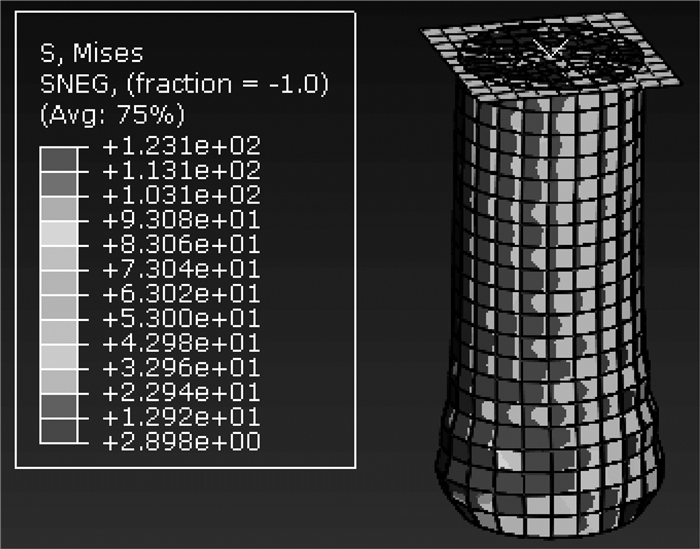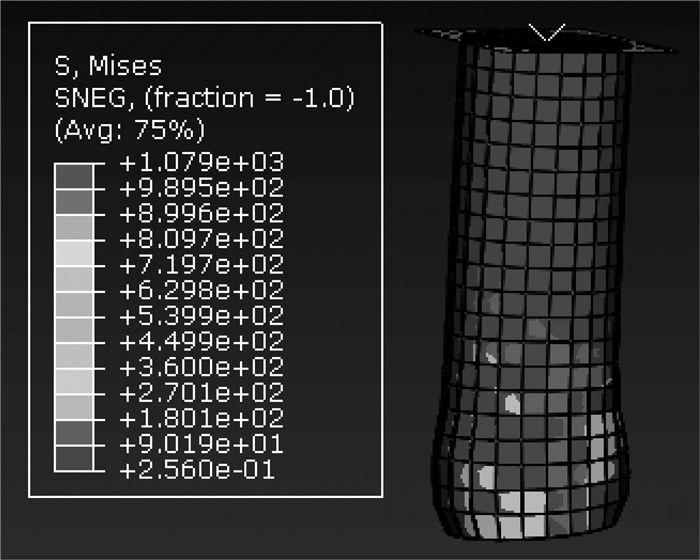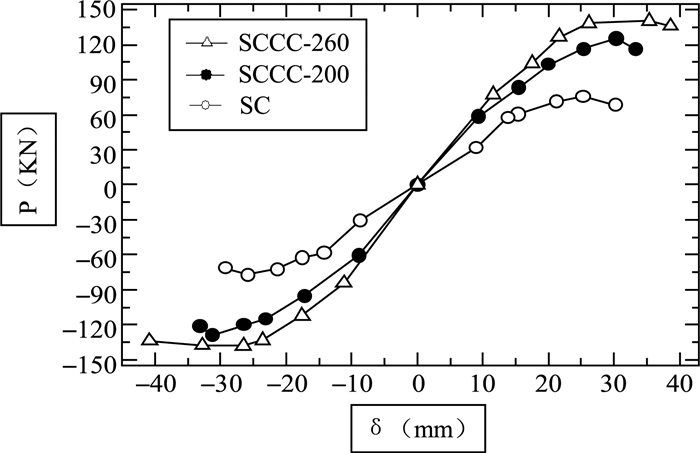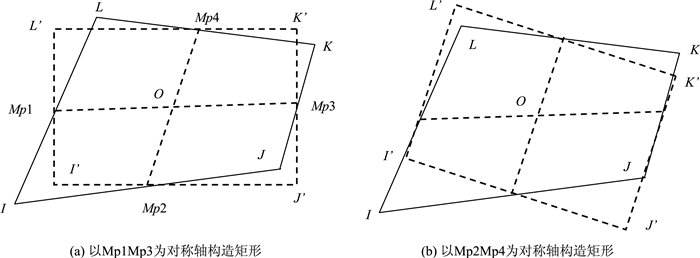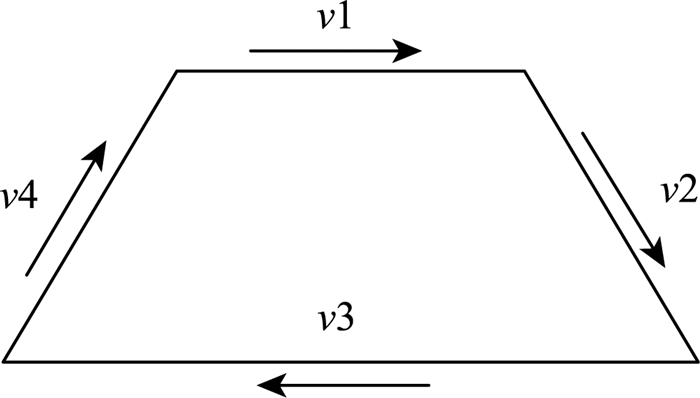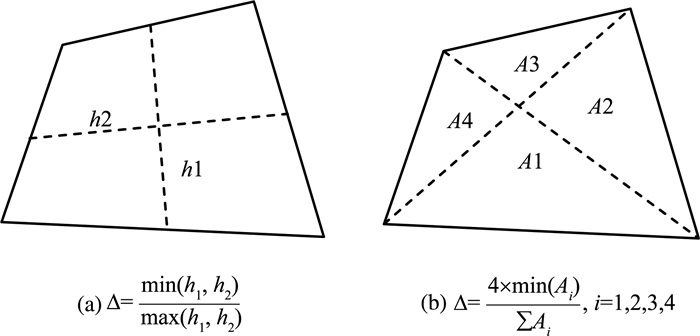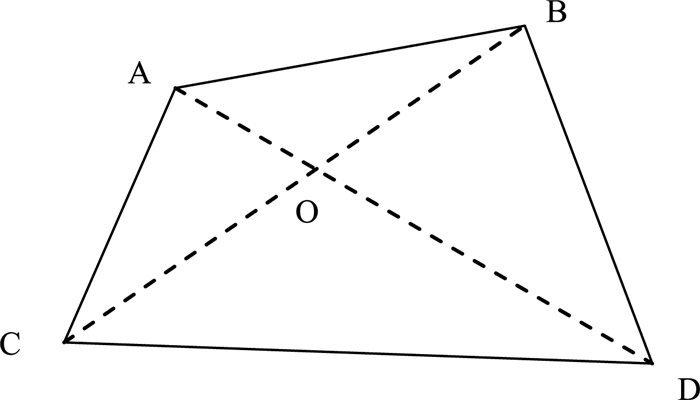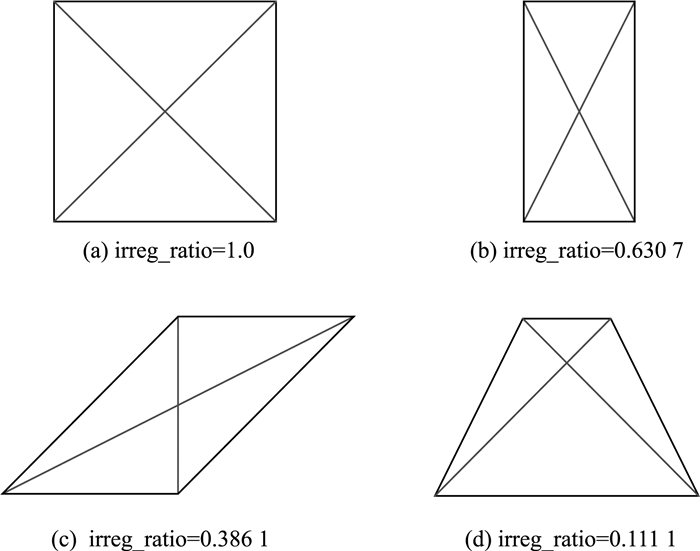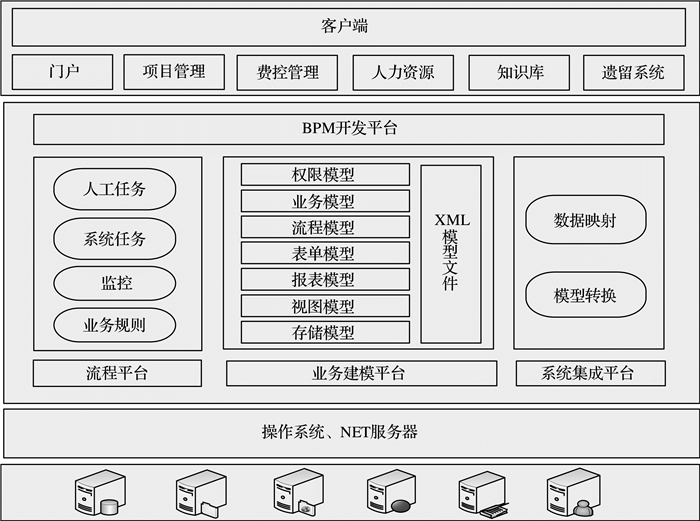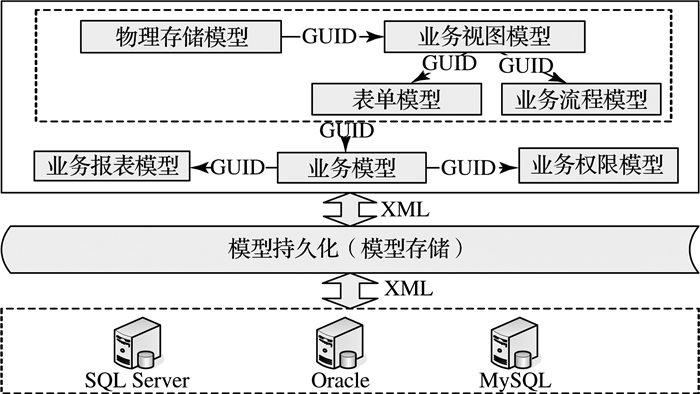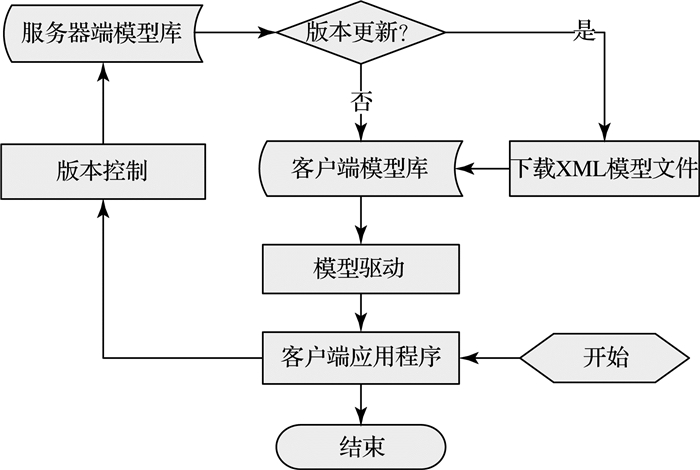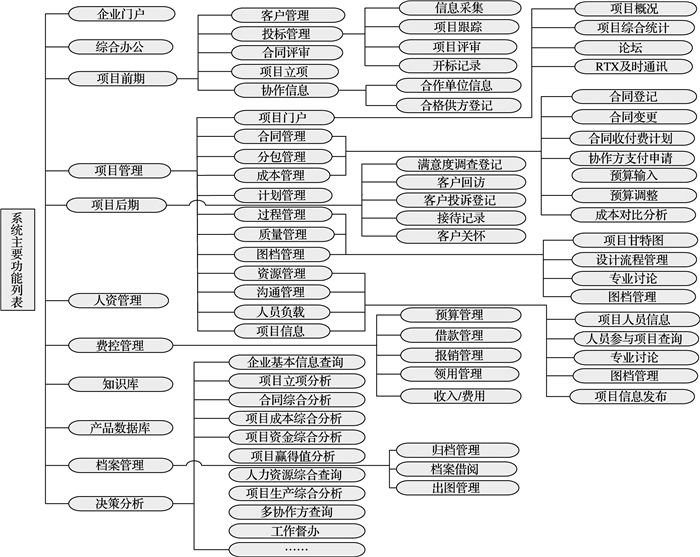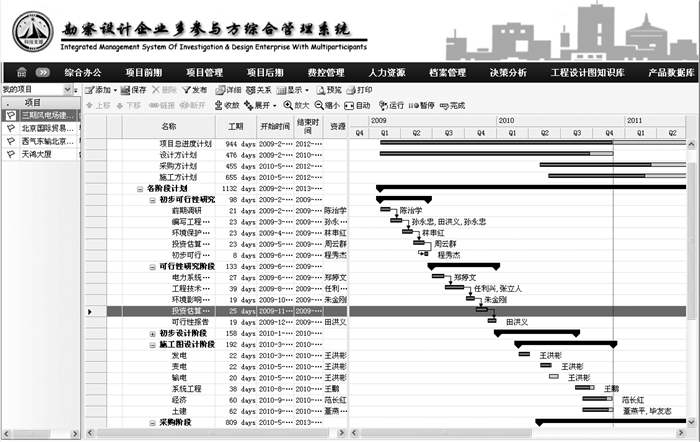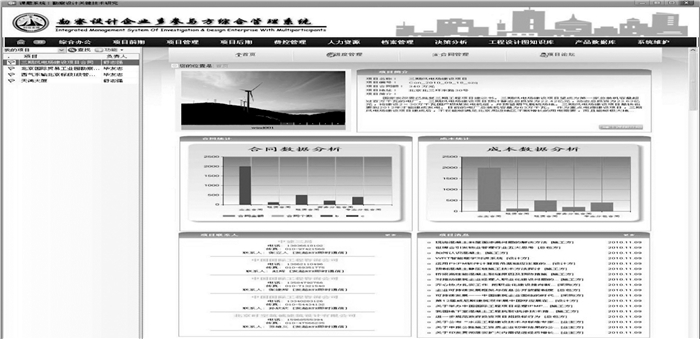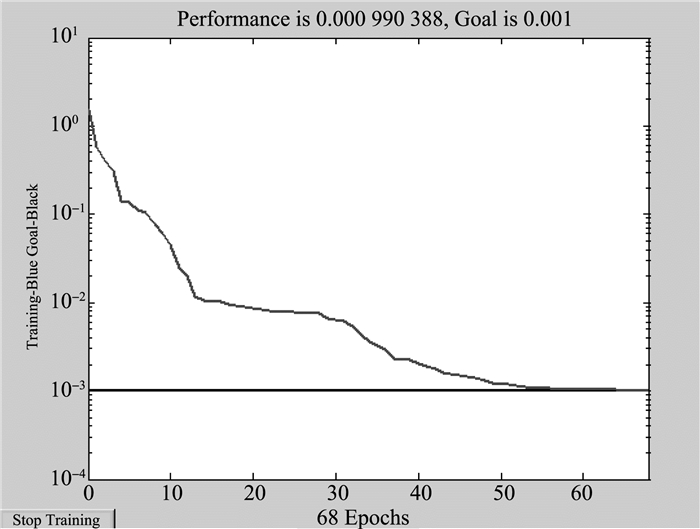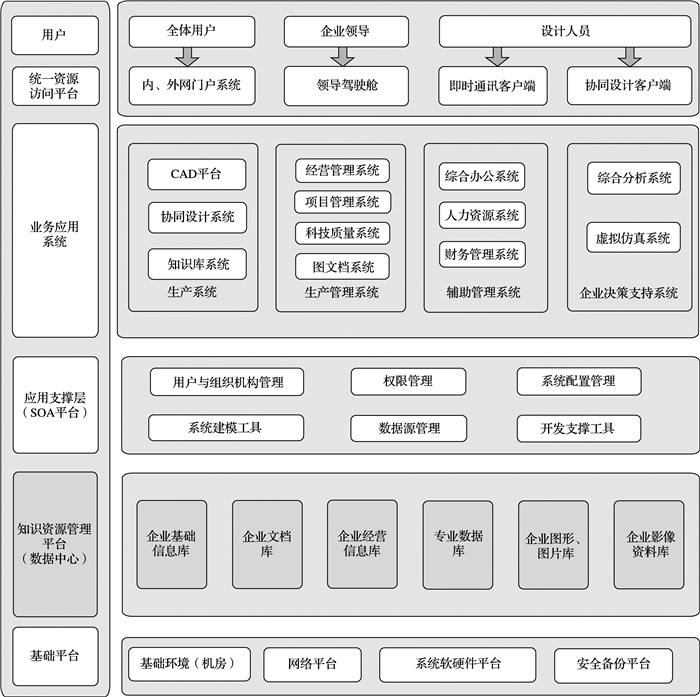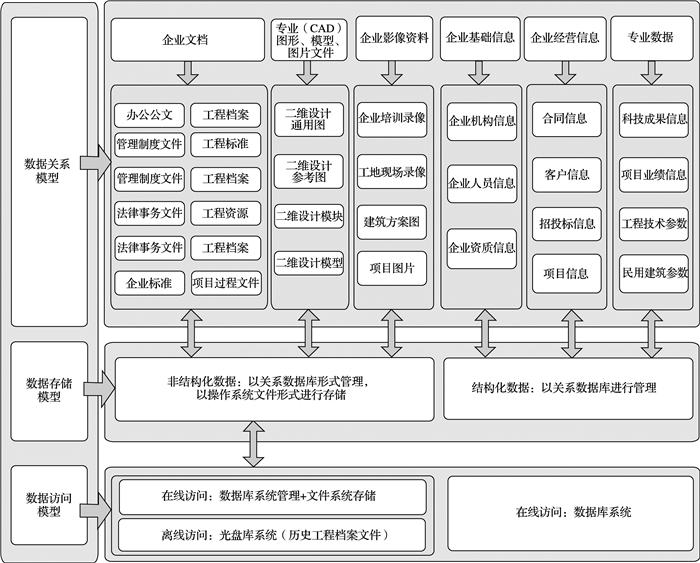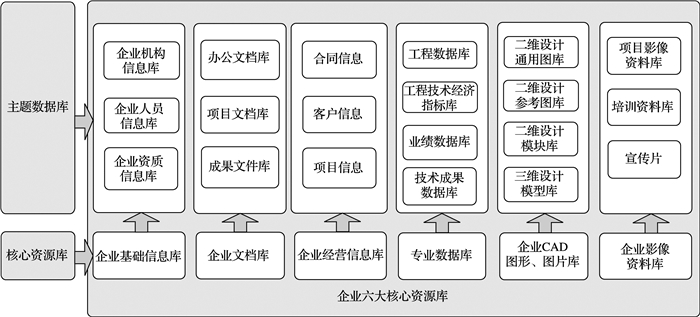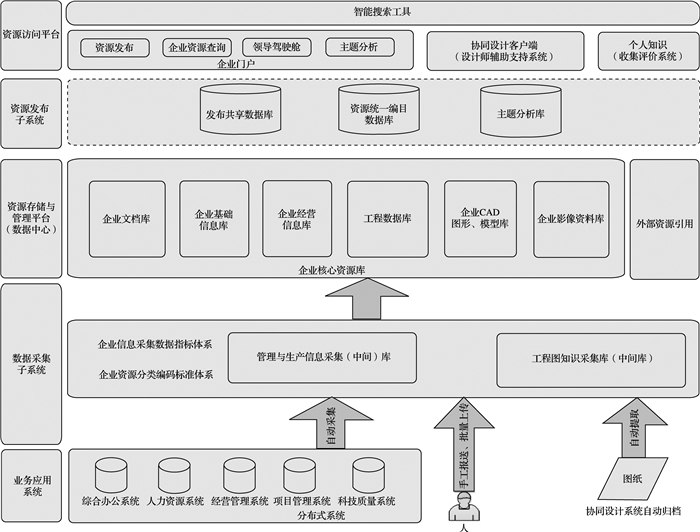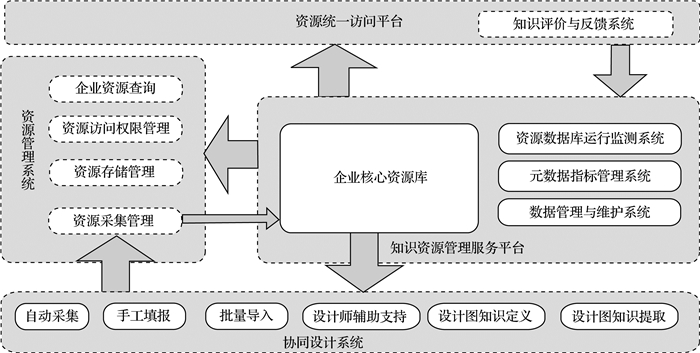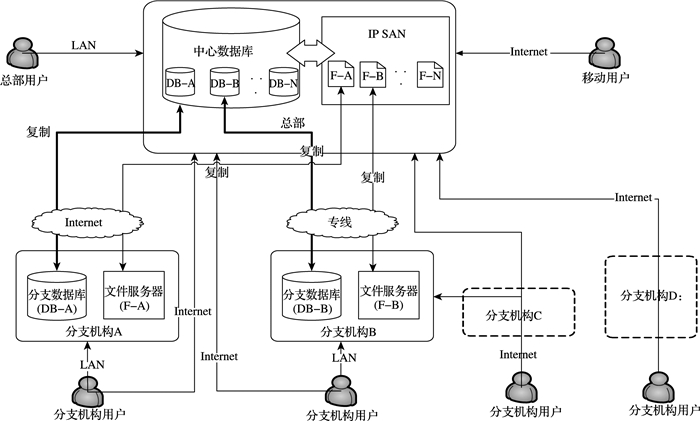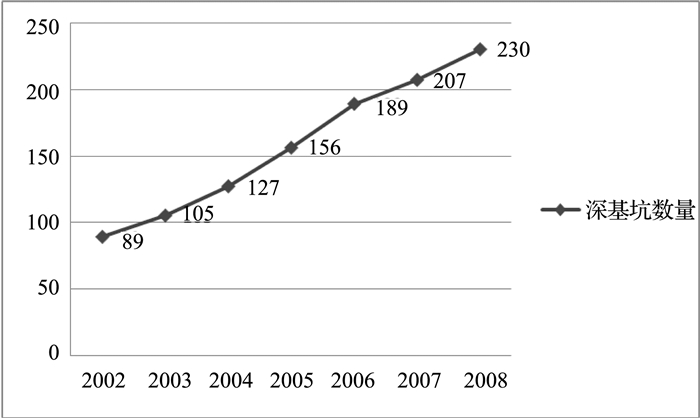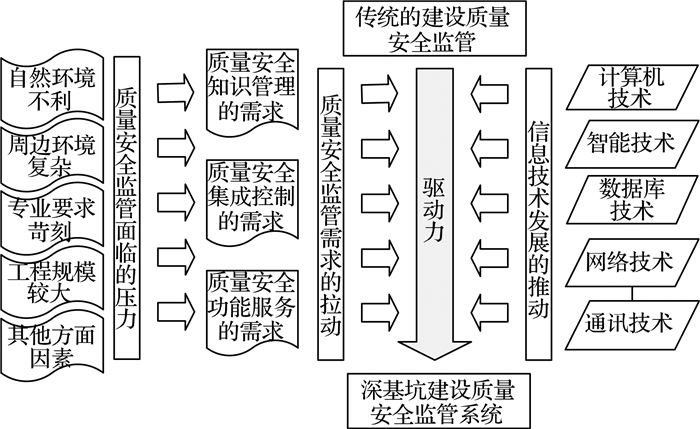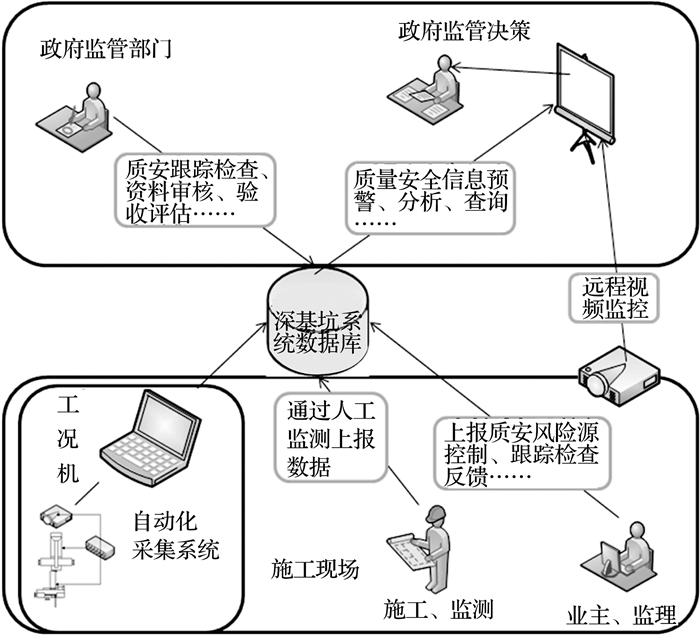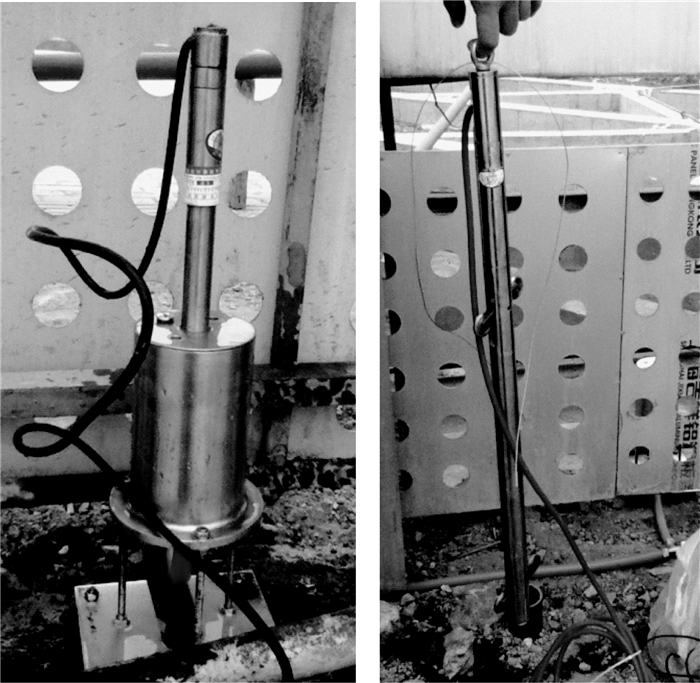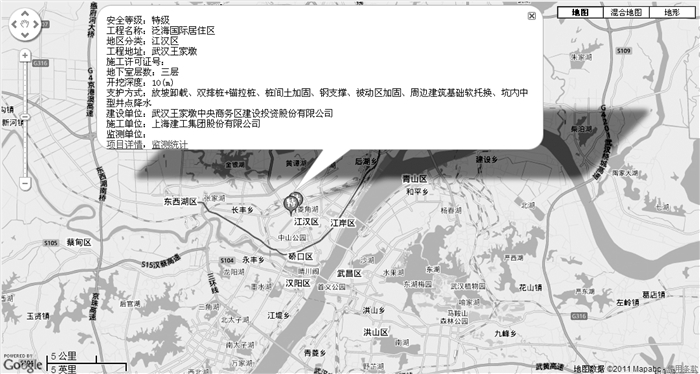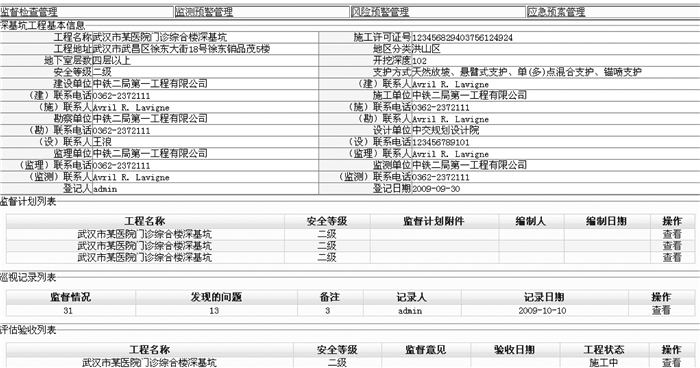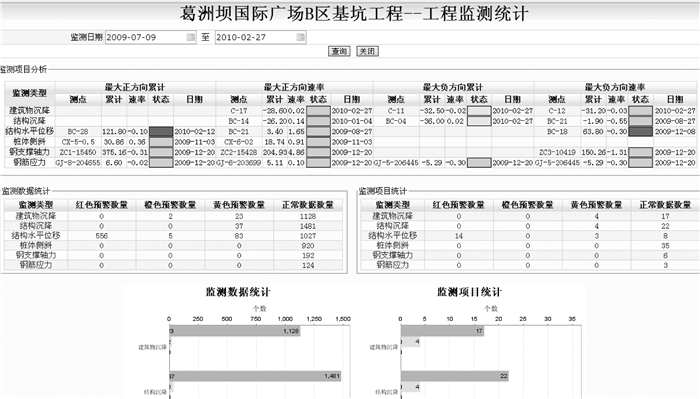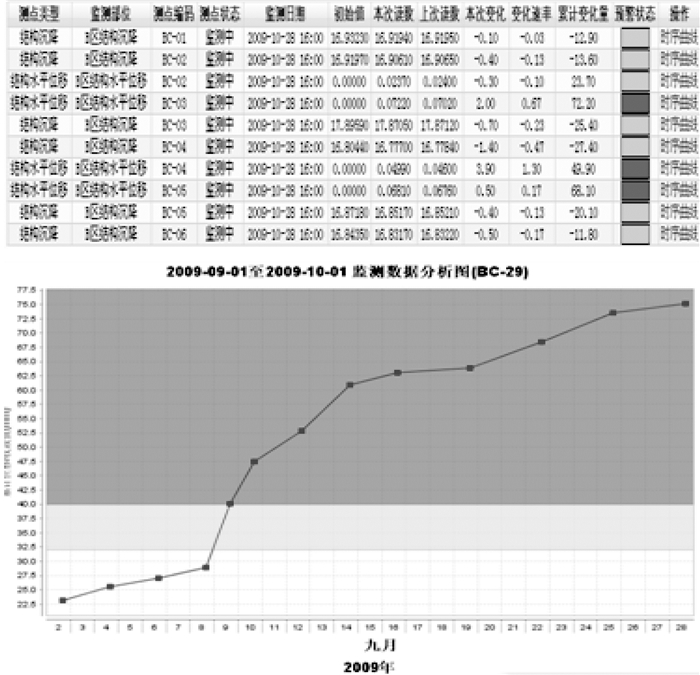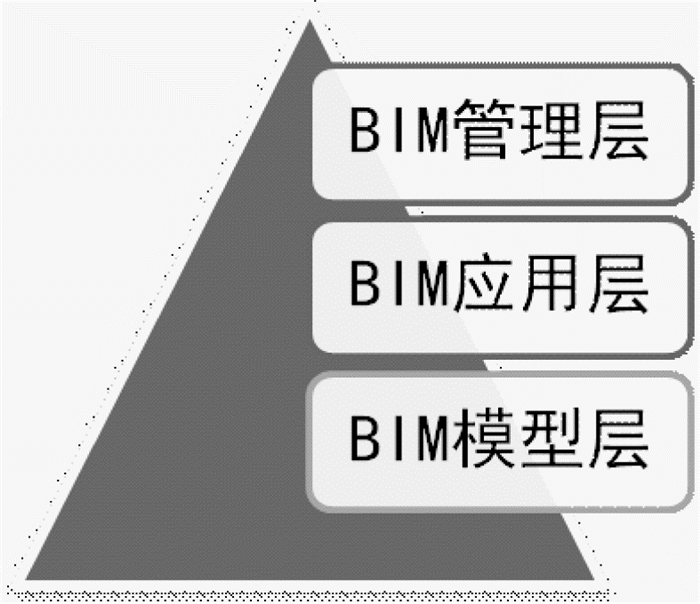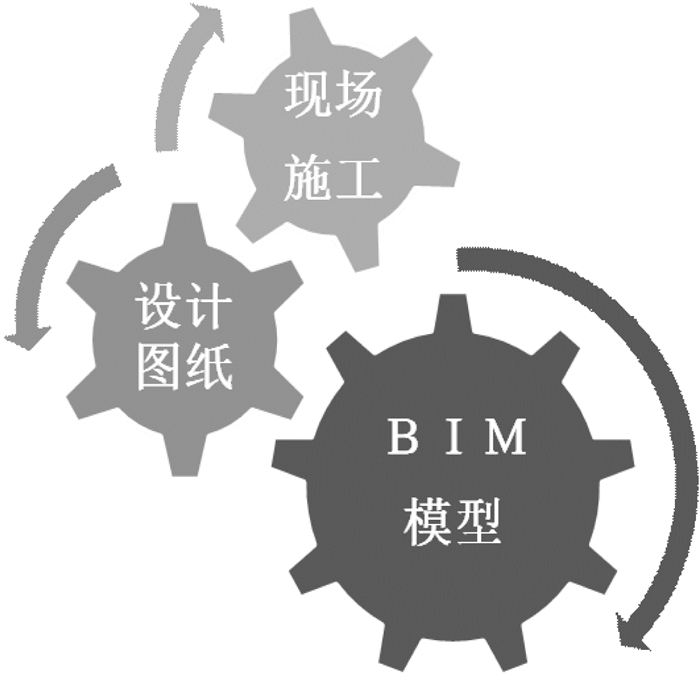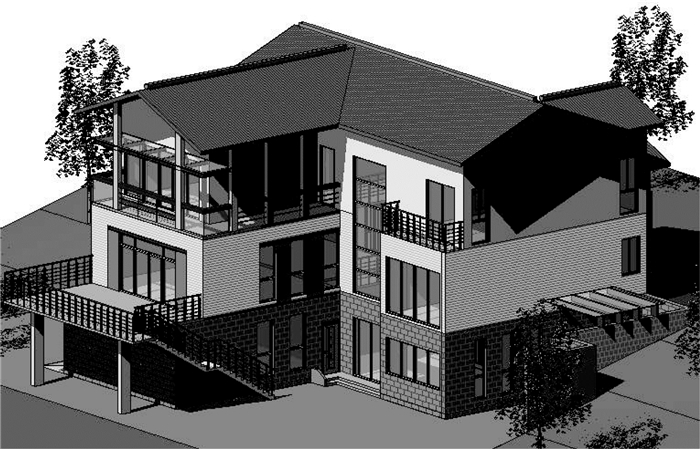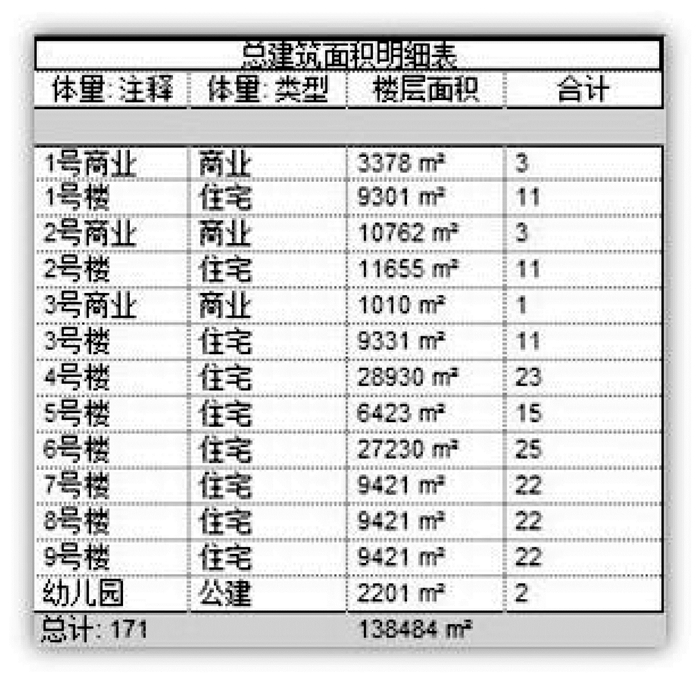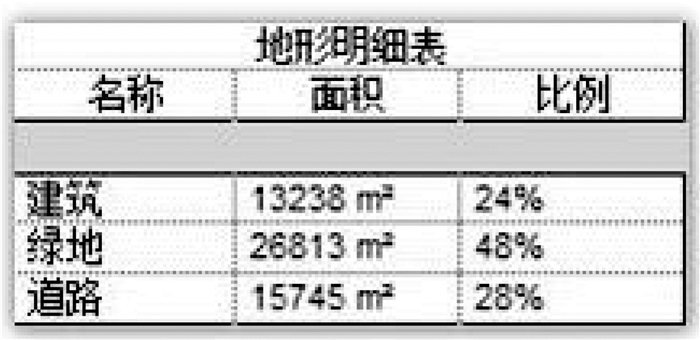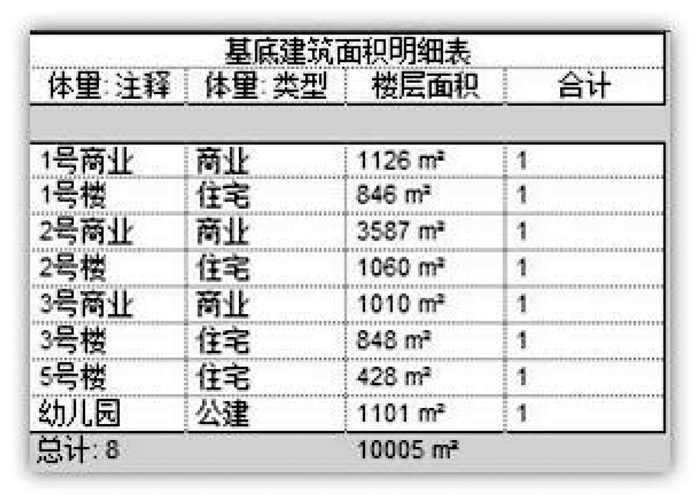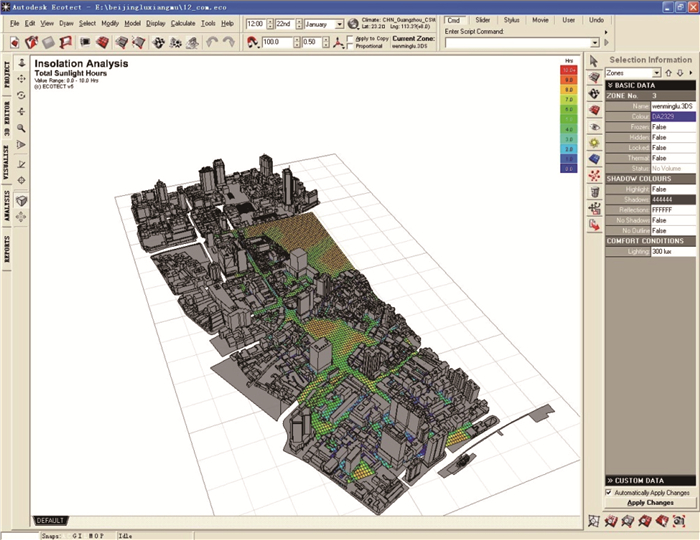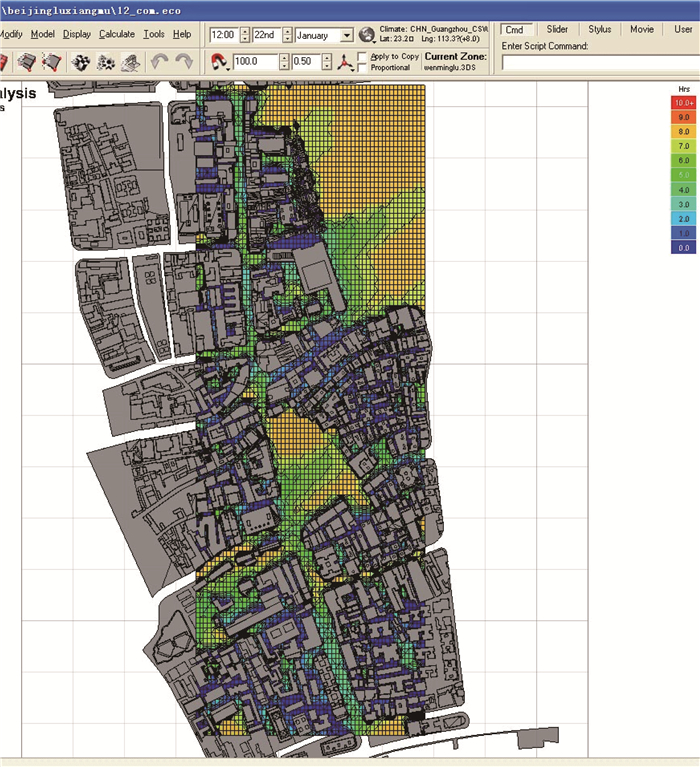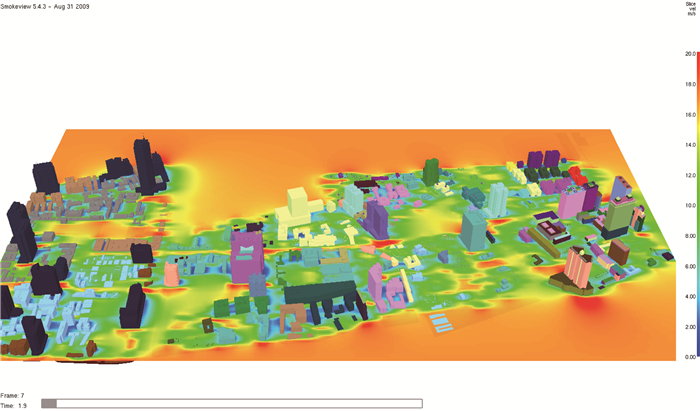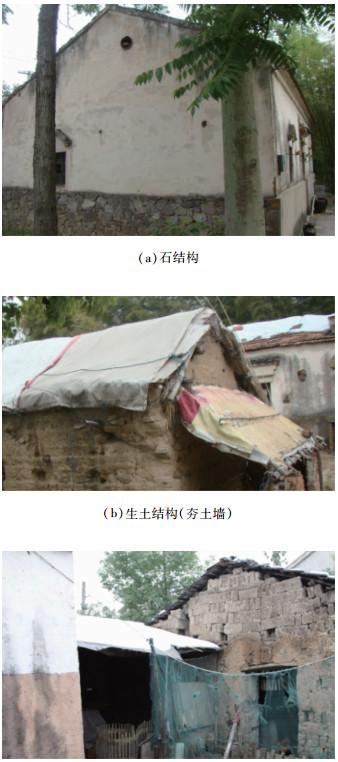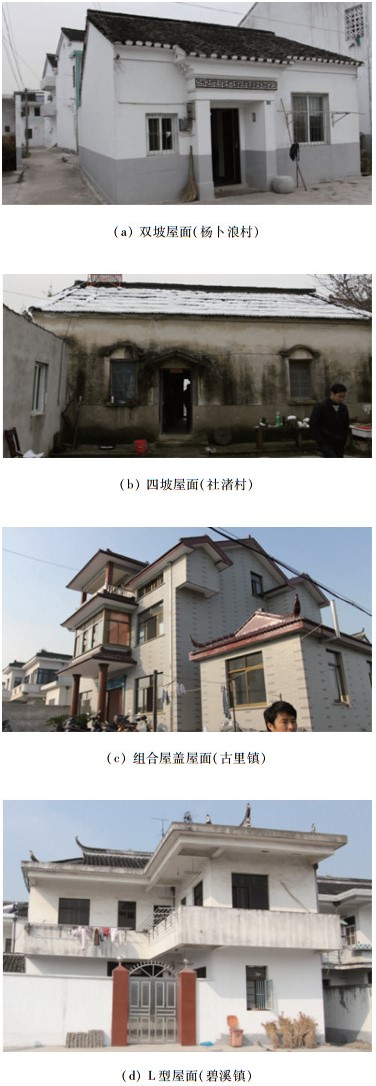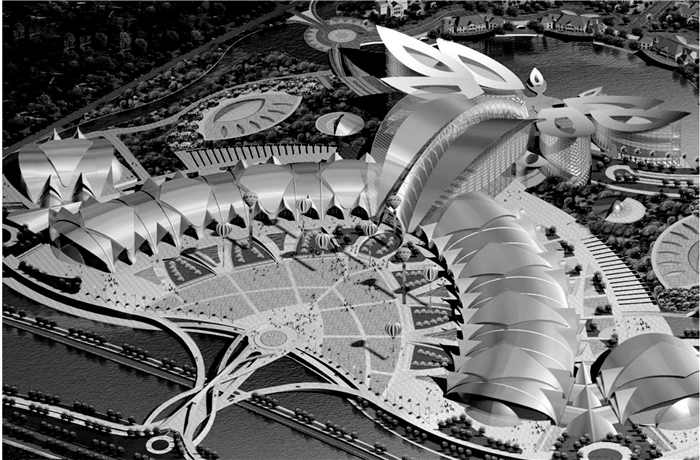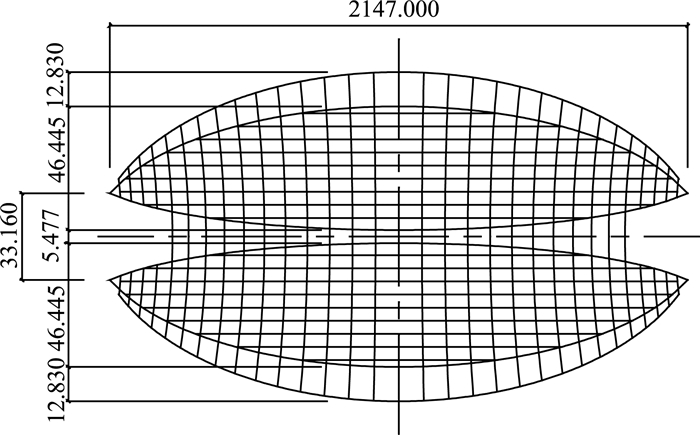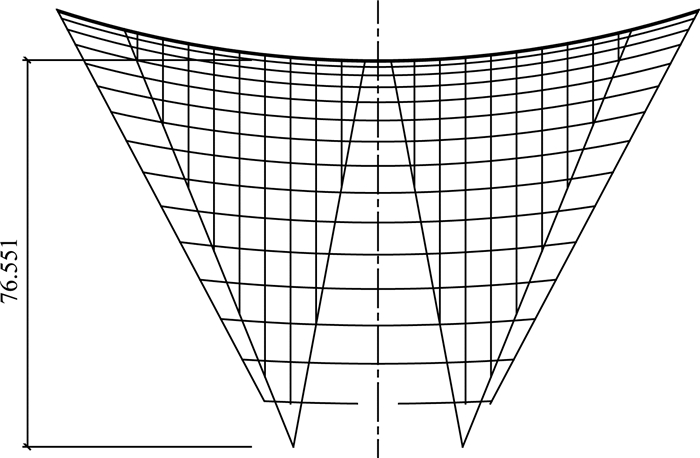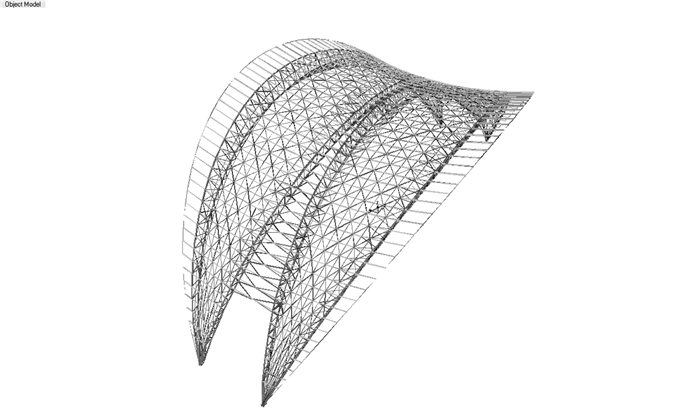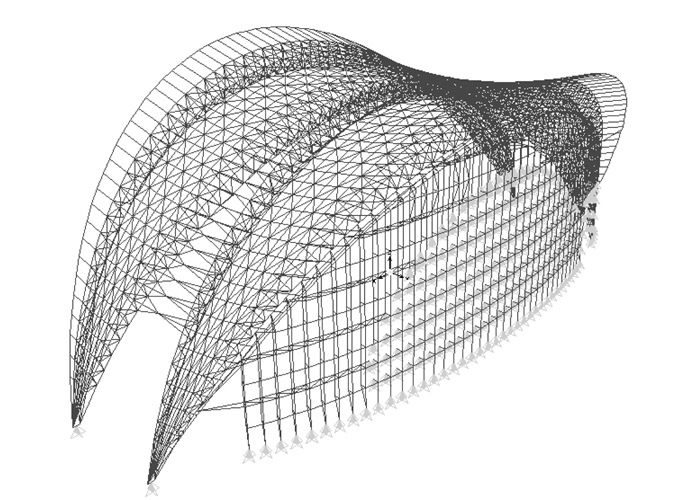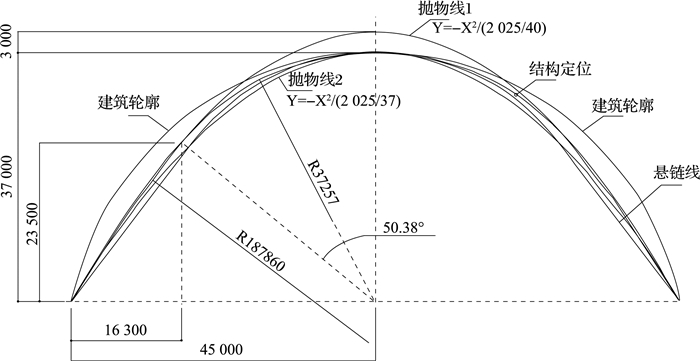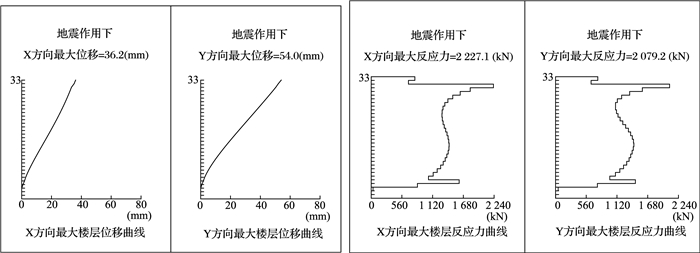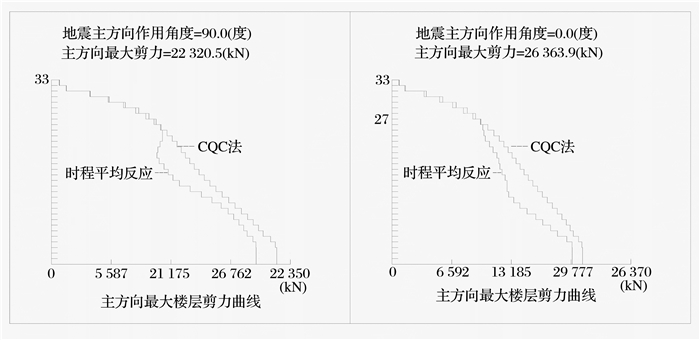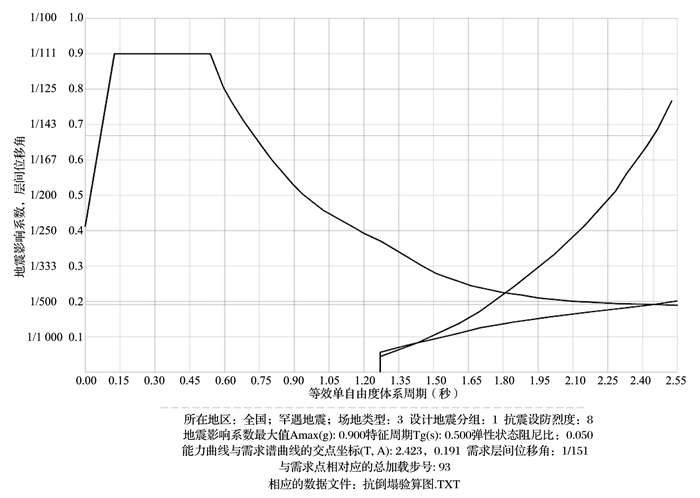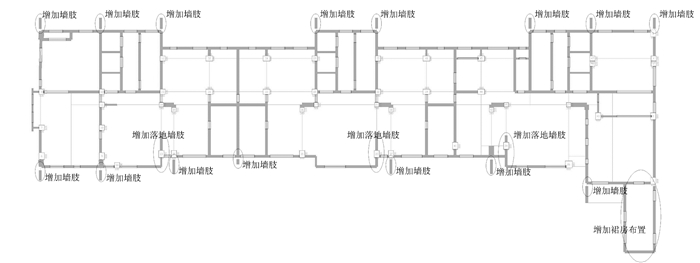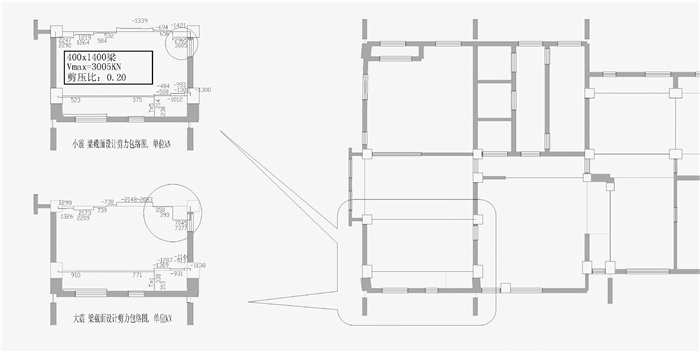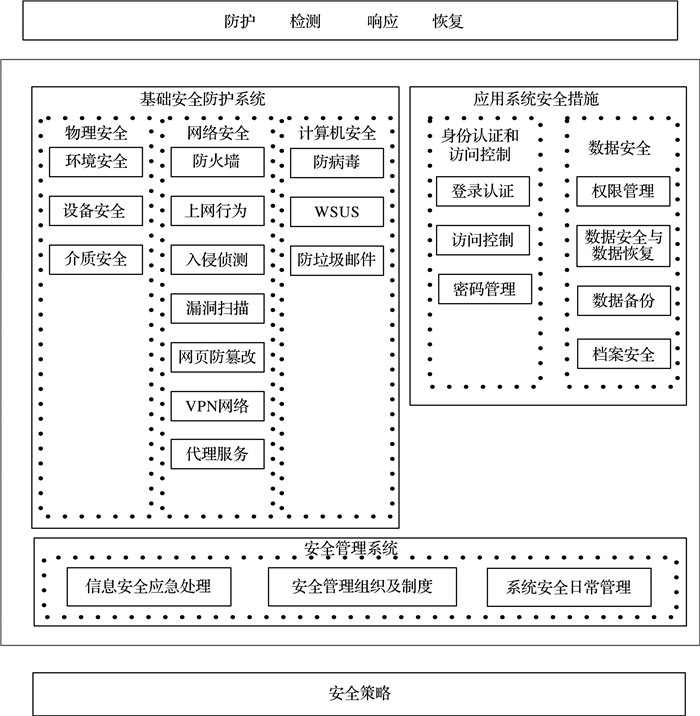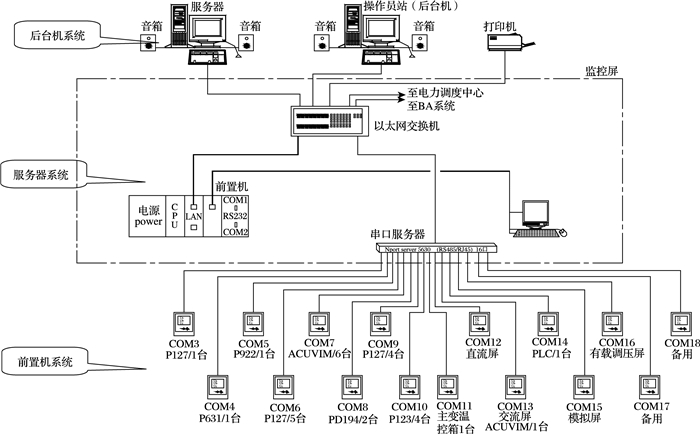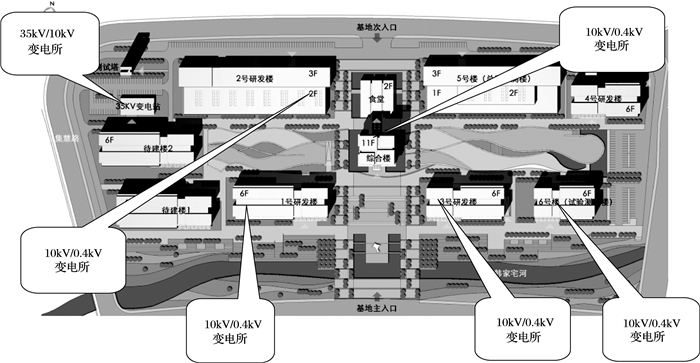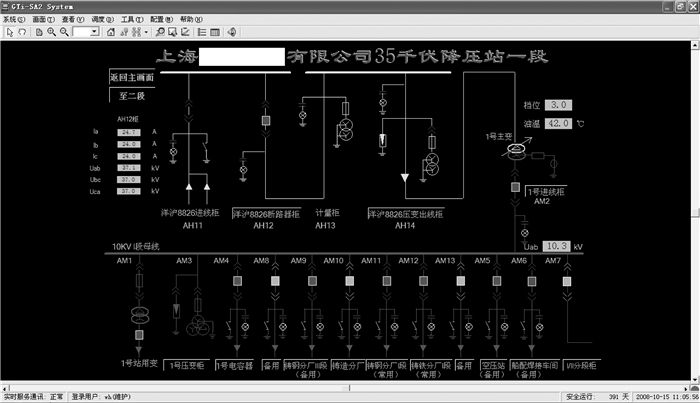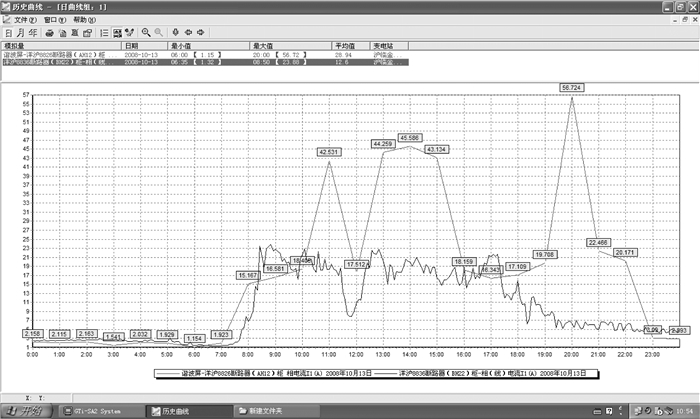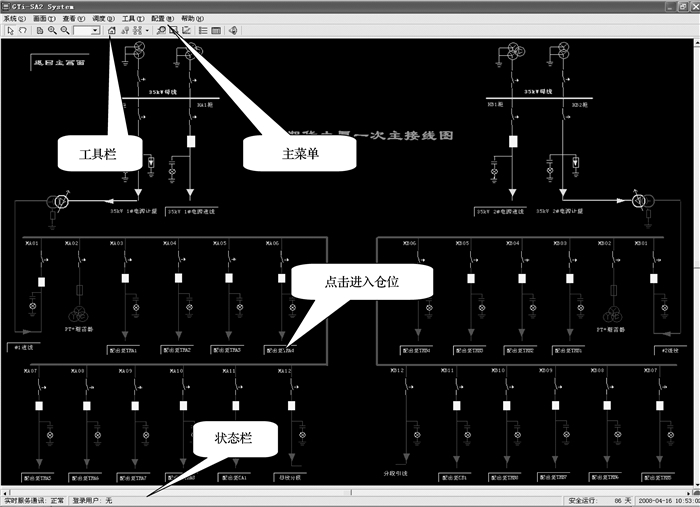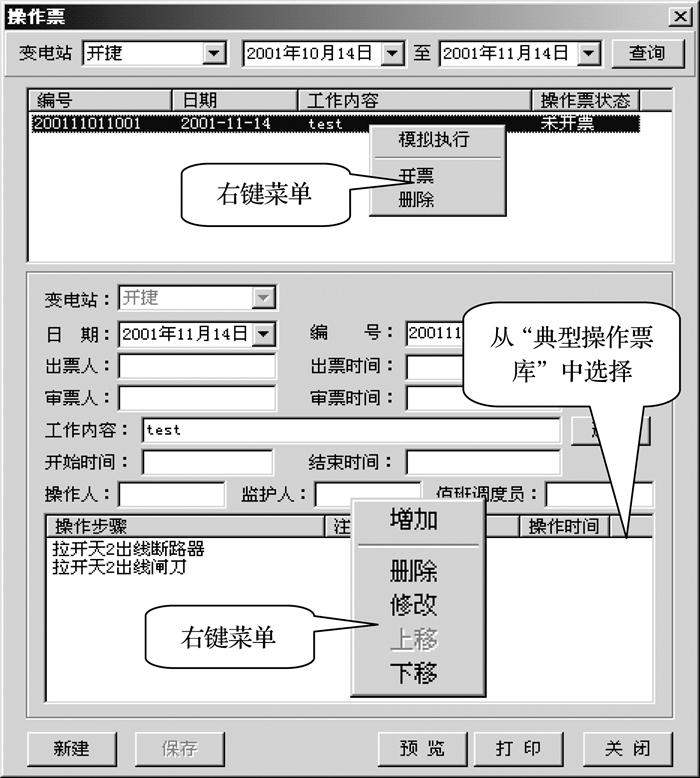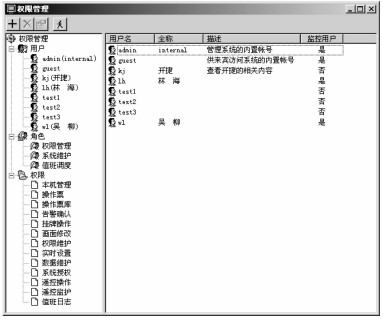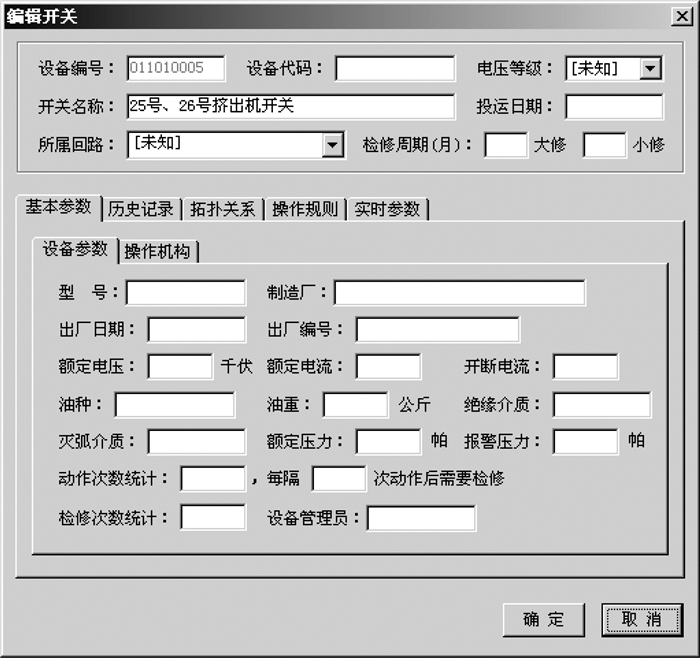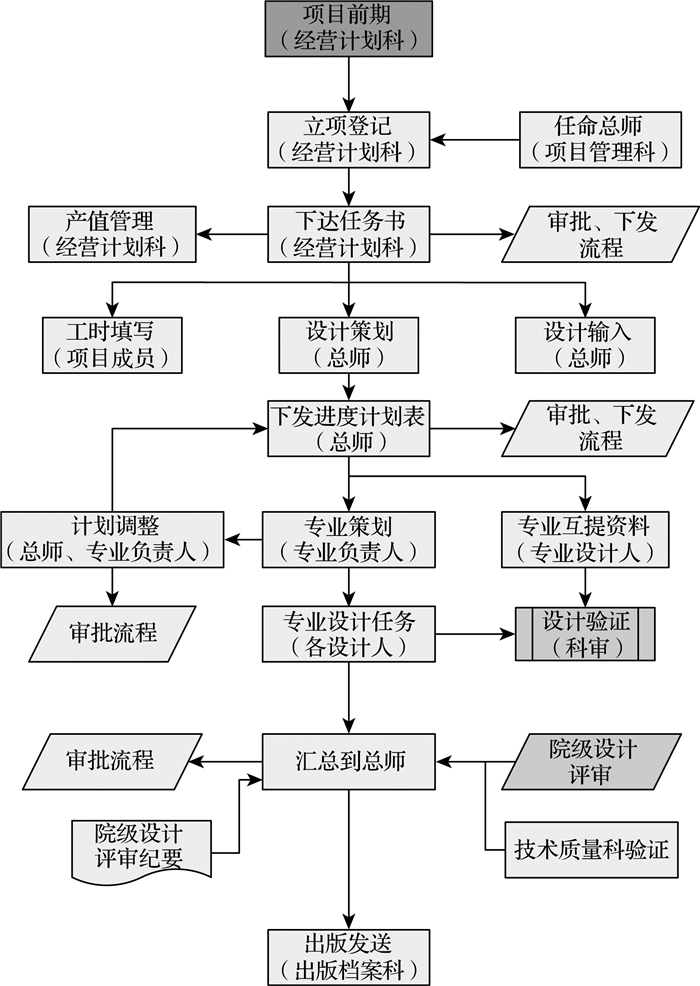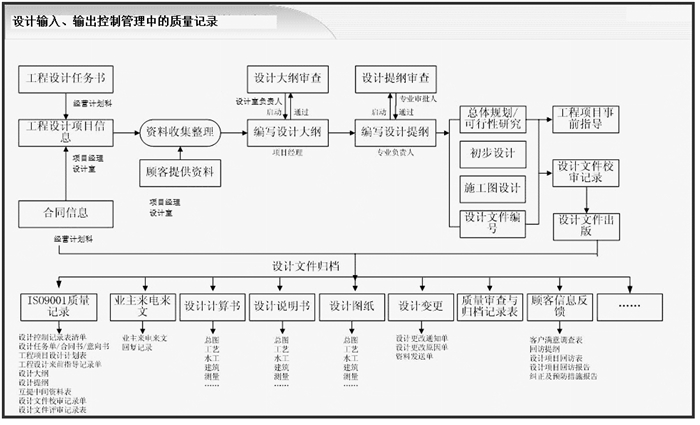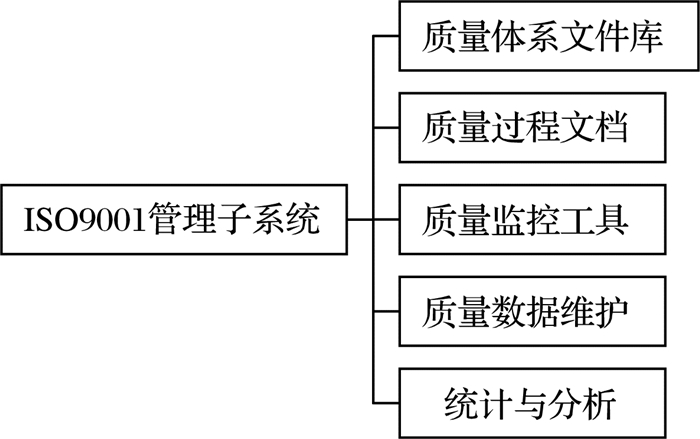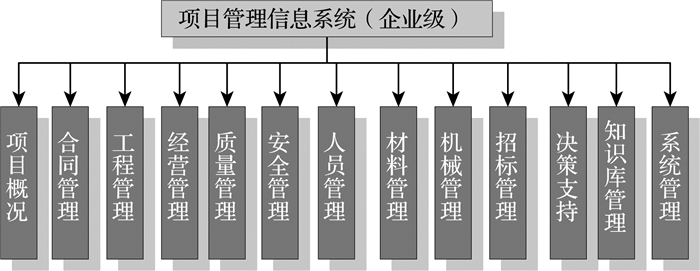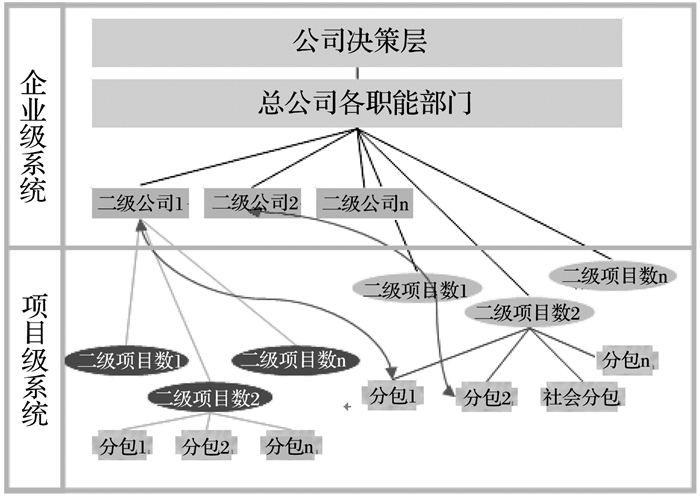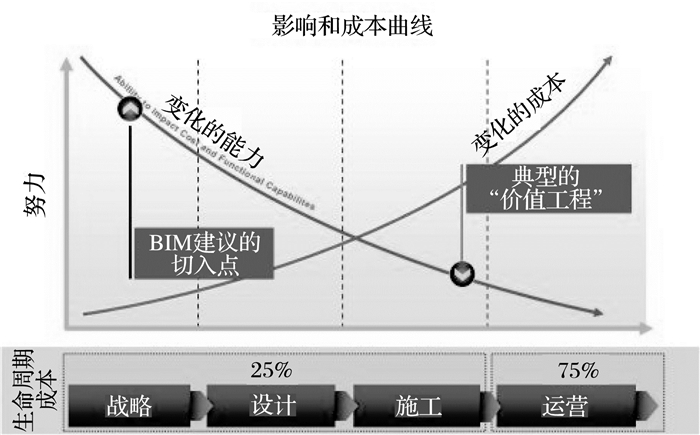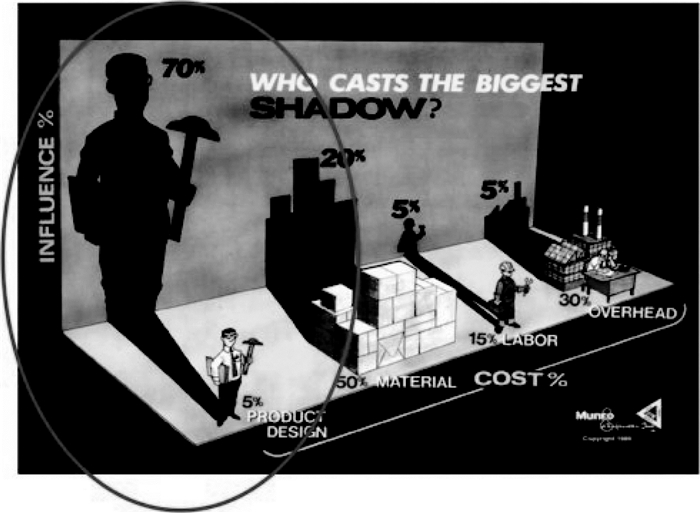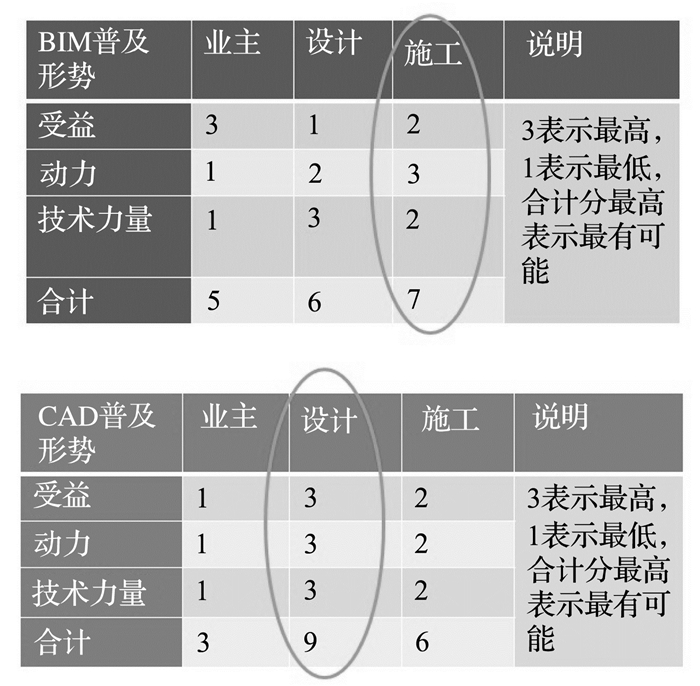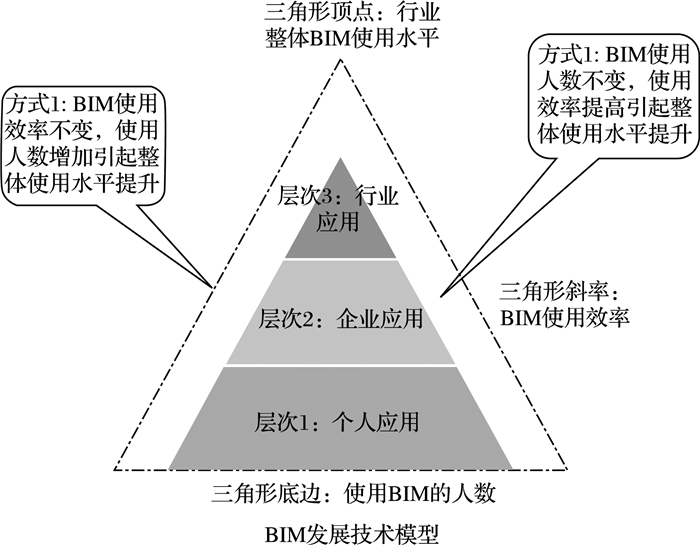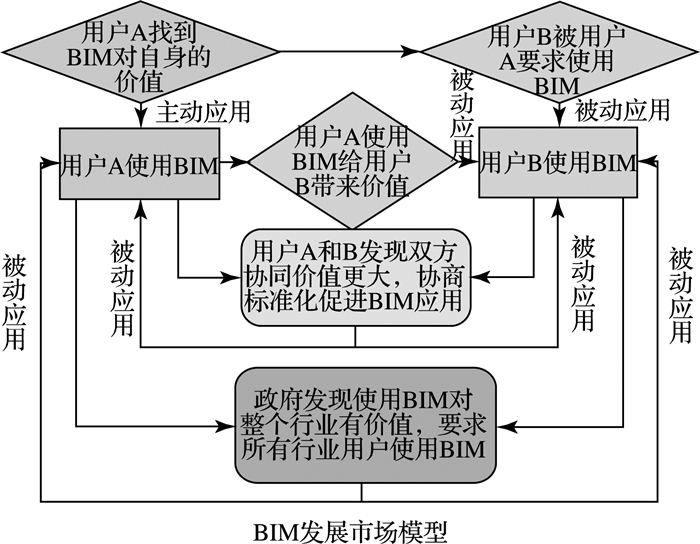Vol. 3, No 2, 2011
Display mode : |
2011, 3(2): 1-4.
Abstract:
The paper discussed the collaborative design standard based on Industry Foundation Class (IFC). It was found that the collaborative design standard should be based on an open industrial standard instead of any private standard. IFC is the available open standard for the building industry. However the IFC open data standard is a necessary condition for the collaborative design standard but not a sufficient condition. It was pointed out in the paper that the process of the collaborative design need also clearly defined in the standard. The paper also introduced the Information Delivery Manual, a use case based methodology to analyze the design process, and Model View Definition, a programmer view of the data exchange within the process. This article points out, based on the IFC data standard framework, the collaborative design standard should include three aspect, namely, IFC data structure, information delivery manual, and model view definition.
The paper discussed the collaborative design standard based on Industry Foundation Class (IFC). It was found that the collaborative design standard should be based on an open industrial standard instead of any private standard. IFC is the available open standard for the building industry. However the IFC open data standard is a necessary condition for the collaborative design standard but not a sufficient condition. It was pointed out in the paper that the process of the collaborative design need also clearly defined in the standard. The paper also introduced the Information Delivery Manual, a use case based methodology to analyze the design process, and Model View Definition, a programmer view of the data exchange within the process. This article points out, based on the IFC data standard framework, the collaborative design standard should include three aspect, namely, IFC data structure, information delivery manual, and model view definition.
2011, 3(2): 5-10.
Abstract:
As one of the most important stages in a project lifecycle, the construction stage consumes vast quantities of resources and energy and has become a control point for the low-carbon construction. The international stage of carbon footprint evaluation standard has been used in this paper for defining the carbon source in construction stage. A carbon consumption method based on BIM and other related software has been put forward firstly, along with the detailed calculation procedure which holds an important reference meaning to guide the low-carbon construction.
As one of the most important stages in a project lifecycle, the construction stage consumes vast quantities of resources and energy and has become a control point for the low-carbon construction. The international stage of carbon footprint evaluation standard has been used in this paper for defining the carbon source in construction stage. A carbon consumption method based on BIM and other related software has been put forward firstly, along with the detailed calculation procedure which holds an important reference meaning to guide the low-carbon construction.
2011, 3(2): 11-15.
Abstract:
In view of status that the new circular hybrid Steel-Concrete-CFRP-Concrete column (simply called SCCC columns) which was proposed by some scholars nearly tow years, hasn't made a deep research in seismic performance. In this paper, using finite element software ABAQUS simulate seismic behaviors of SCCC composite columns which under the action of axial compressive force and low cycle reversed loading, studied the effect on seismic performance of composite columns in different diameter CFRP tubes. Analysis results show that, along with the increase of CFRP tube diameter, the seismic performance of composite columns had different degrees of improvement. But see from the structure's fire behavior, the increse of CFRP tube diameter will make fire resistance time decreased obviously. Therefore, it is necessary to determine a suitable diameter scope, makes the composite column can play its performance. At the same time, can provide effective theoretical analysis method for experimental.
In view of status that the new circular hybrid Steel-Concrete-CFRP-Concrete column (simply called SCCC columns) which was proposed by some scholars nearly tow years, hasn't made a deep research in seismic performance. In this paper, using finite element software ABAQUS simulate seismic behaviors of SCCC composite columns which under the action of axial compressive force and low cycle reversed loading, studied the effect on seismic performance of composite columns in different diameter CFRP tubes. Analysis results show that, along with the increase of CFRP tube diameter, the seismic performance of composite columns had different degrees of improvement. But see from the structure's fire behavior, the increse of CFRP tube diameter will make fire resistance time decreased obviously. Therefore, it is necessary to determine a suitable diameter scope, makes the composite column can play its performance. At the same time, can provide effective theoretical analysis method for experimental.
2011, 3(2): 16-20.
Abstract:
Single element mesh shape evaluate index of ANSYS and SAP2000 is analyzed and summarized in the present paper.Based on this indexes, a new index is proposed. Benefit from the new index, not only single element mesh but also mesh compose of more elements can be evaluated. A cantilever beam problem is meshed by different shape and procedure programmed by C++ language is used to calculate this index of the mesh, after compared the solution with exact one, a conclusion can be draw that there is a strong correlation between the index value and the precision of solution. Multilayer and high-rise buildings mesh is also evaluated, the results show the index is still efficient and reliable.
Single element mesh shape evaluate index of ANSYS and SAP2000 is analyzed and summarized in the present paper.Based on this indexes, a new index is proposed. Benefit from the new index, not only single element mesh but also mesh compose of more elements can be evaluated. A cantilever beam problem is meshed by different shape and procedure programmed by C++ language is used to calculate this index of the mesh, after compared the solution with exact one, a conclusion can be draw that there is a strong correlation between the index value and the precision of solution. Multilayer and high-rise buildings mesh is also evaluated, the results show the index is still efficient and reliable.
2011, 3(2): 21-25.
Abstract:
Firstly, the basic concepts of the 10 reduction algorithm and the classification of classical rough set theory is introduced, the structure scheme design process based on classical method of rough set reduction is given; Secondly, according to high-rise structure example, the structural design method is given based on classical rough set reduction algorithm, it develops a new approach and method for the structure intelligent design. Practice shows that comparing with the traditional methods to treat the inaccuracy problem, it has the advantages the traditional method does not have to use rough set to solve the structural design problems with uncertain information processing.
Firstly, the basic concepts of the 10 reduction algorithm and the classification of classical rough set theory is introduced, the structure scheme design process based on classical method of rough set reduction is given; Secondly, according to high-rise structure example, the structural design method is given based on classical rough set reduction algorithm, it develops a new approach and method for the structure intelligent design. Practice shows that comparing with the traditional methods to treat the inaccuracy problem, it has the advantages the traditional method does not have to use rough set to solve the structural design problems with uncertain information processing.
2011, 3(2): 26-32,36.
Abstract:
Combining with model-driven (MDA) technical characteristics and business process management (BPM) concepts, research and implementation of the system platform, which was used to meet the current needs of multi-participant project management for survey and design enterprises, was presented. Firstly, a system framework and implementation strategies based on BPM was proposed, which focuses on the XML-based model-driven implementation process and technical characteristics; Secondly, the software system of multi-participant project management for Survey and Design Enterprises has been accomplished, taking into account the actual needs of the project management; Finally, the core business modules and business characteristics of the system were described.
Combining with model-driven (MDA) technical characteristics and business process management (BPM) concepts, research and implementation of the system platform, which was used to meet the current needs of multi-participant project management for survey and design enterprises, was presented. Firstly, a system framework and implementation strategies based on BPM was proposed, which focuses on the XML-based model-driven implementation process and technical characteristics; Secondly, the software system of multi-participant project management for Survey and Design Enterprises has been accomplished, taking into account the actual needs of the project management; Finally, the core business modules and business characteristics of the system were described.
2011, 3(2): 33-36.
Abstract:
As the acid-base salt, moisture, UV light, temperature and other environmental conditions has some influence on the FRP bars, which makes the international long-term performance of FRP international study be more and more concerned. This paper proposes the study of CFRP's durability in the of acid-base erosion using BP neural network method CFRP's. The results show that this method is possible and it can provide theoretical basis for the durability design.
As the acid-base salt, moisture, UV light, temperature and other environmental conditions has some influence on the FRP bars, which makes the international long-term performance of FRP international study be more and more concerned. This paper proposes the study of CFRP's durability in the of acid-base erosion using BP neural network method CFRP's. The results show that this method is possible and it can provide theoretical basis for the durability design.
2011, 3(2): 37-44.
Abstract:
Based on technical architecture, data architecture, application architecture, business architecture, network architecture and other information systems architecture design theory combing an engineering instance.This paper proposes a reference design solution for the Information system architecture based on resource management for survey and design enterprises, meanwhile, gives reference design methods and models of the key techniques in the system architecture's design.
Based on technical architecture, data architecture, application architecture, business architecture, network architecture and other information systems architecture design theory combing an engineering instance.This paper proposes a reference design solution for the Information system architecture based on resource management for survey and design enterprises, meanwhile, gives reference design methods and models of the key techniques in the system architecture's design.
2011, 3(2): 45-50.
Abstract:
The article introduces the background of informatization in quality and safety Supervision of deep excavation engineering. This study suggests applying information technology as a basic approach and method to Quality and Safety Supervision System in Deep Excavation Engineering (QSSSDEE). Based on the Modern Management Principles, Control Theory and Information Theory, this study fulfills the framework design for QSSSDEE, and designs the systemic structures and functions to service government supervision organizations and construction units. In the end, according to Wuhan Quality Supervision Station of Construction Project, the authors presents a discussion on the development realization process, function system, application of QSSSDEE, and summarizes the effects in the application of the system.
The article introduces the background of informatization in quality and safety Supervision of deep excavation engineering. This study suggests applying information technology as a basic approach and method to Quality and Safety Supervision System in Deep Excavation Engineering (QSSSDEE). Based on the Modern Management Principles, Control Theory and Information Theory, this study fulfills the framework design for QSSSDEE, and designs the systemic structures and functions to service government supervision organizations and construction units. In the end, according to Wuhan Quality Supervision Station of Construction Project, the authors presents a discussion on the development realization process, function system, application of QSSSDEE, and summarizes the effects in the application of the system.
2011, 3(2): 51-54.
Abstract:
With digitization and the development of information technology, BIM technology as the key technology of the AEC industry relies on the implementation of specific projects. By analyzing the strategy on BIM application, team selection and the risks of introduction of technology, the article tells the owners how to implement specific projects, how to avoid risk, and how to obtain the true value of BIM technology.
With digitization and the development of information technology, BIM technology as the key technology of the AEC industry relies on the implementation of specific projects. By analyzing the strategy on BIM application, team selection and the risks of introduction of technology, the article tells the owners how to implement specific projects, how to avoid risk, and how to obtain the true value of BIM technology.
2011, 3(2): 56-61.
Abstract:
This is the first series of the articles《Enterprise Application implementation steps of BIM》, combine the BIMChina and myself that carried out in the country in recent years practical experience in BIM application experience, to tell the implementation of enterprise-class application steps and BIM implementation issues that need attention. Clearly put forward the implementation of enterprise-class BIM applications are divided into three steps. This article focuses on one of the first two steps——Implementation of the strategy planning and implementation of standards and procedures established. BIM applications of the implementation of the strategy well prepared to achieve the sustainable development of BIM enterprise applications.
This is the first series of the articles《Enterprise Application implementation steps of BIM》, combine the BIMChina and myself that carried out in the country in recent years practical experience in BIM application experience, to tell the implementation of enterprise-class application steps and BIM implementation issues that need attention. Clearly put forward the implementation of enterprise-class BIM applications are divided into three steps. This article focuses on one of the first two steps——Implementation of the strategy planning and implementation of standards and procedures established. BIM applications of the implementation of the strategy well prepared to achieve the sustainable development of BIM enterprise applications.
2011, 3(2): 63-68.
Abstract:
In the age of people increasingly concerning on ecological environment, how to integrate urban ecology into urban planning process becomes a more and more important issue by urban planning scholars. This paper discussed the role of micro-environmental and ecological simulation in urban design process, and its technical methods with Beijing Road case in Guangzhou.
In the age of people increasingly concerning on ecological environment, how to integrate urban ecology into urban planning process becomes a more and more important issue by urban planning scholars. This paper discussed the role of micro-environmental and ecological simulation in urban design process, and its technical methods with Beijing Road case in Guangzhou.
2011, 3(2): 69-73.
Abstract:
In-depth field research was done to in south jiangsu's rural residential house, and got the first-hand information of the region's house's history, current situation and future development. Basic structure types, structural features and it's distribution of this region's houses were Summarized. Relevant research results could contribute to the improvement of design capacity of rural houses, and provide a more abundant and reliable material basis for the development of the related rural house design software.
In-depth field research was done to in south jiangsu's rural residential house, and got the first-hand information of the region's house's history, current situation and future development. Basic structure types, structural features and it's distribution of this region's houses were Summarized. Relevant research results could contribute to the improvement of design capacity of rural houses, and provide a more abundant and reliable material basis for the development of the related rural house design software.
2011, 3(2): 75-78.
Abstract:
The architecture presentation and construction costs of a long span steel roof are considerably affected by the selection of its structural form. This article discussed the creation of an exhibition centre roof structure. It further explored the comparison and optimization of two different long span space structures. The method of designing the architectural outline by simulating its structural load path could be established as an example for similar structure in the future.
The architecture presentation and construction costs of a long span steel roof are considerably affected by the selection of its structural form. This article discussed the creation of an exhibition centre roof structure. It further explored the comparison and optimization of two different long span space structures. The method of designing the architectural outline by simulating its structural load path could be established as an example for similar structure in the future.
2011, 3(2): 79-85.
Abstract:
Brief discussion on design principles of over-limit frame-supported structure. Through analyzing the deign process, we endeavor to illustrate that for relatively complex structure system, due to the lack of clear specifications or normal requirements from current design codes, need to back to the basic deign principles of structural design. Firstly, need to set the fortification level of seismic deign, under the small, medium and great earthquake respectively, for different parts of the structure and under different forces. Then proceeding with purposive structural analysis, base on the different anticipations and acquiring the corresponding and reliable internal force values. This way, the actually structural status can be reflected and finally secure the safety of the structure.
Brief discussion on design principles of over-limit frame-supported structure. Through analyzing the deign process, we endeavor to illustrate that for relatively complex structure system, due to the lack of clear specifications or normal requirements from current design codes, need to back to the basic deign principles of structural design. Firstly, need to set the fortification level of seismic deign, under the small, medium and great earthquake respectively, for different parts of the structure and under different forces. Then proceeding with purposive structural analysis, base on the different anticipations and acquiring the corresponding and reliable internal force values. This way, the actually structural status can be reflected and finally secure the safety of the structure.
2011, 3(2): 86-90.
Abstract:
Based on the national standards and codes like "Classified Criteria for Security Protection of Computer Information System", aiming to reduce the enterprise information safety risk to an acceptable level and through the analysis on enterprise information safety demand, this article introduces the basic principle of establishing an enterprise information safety protection system as well as the approach to the selection and implementation of relating information safety control measures.
Based on the national standards and codes like "Classified Criteria for Security Protection of Computer Information System", aiming to reduce the enterprise information safety risk to an acceptable level and through the analysis on enterprise information safety demand, this article introduces the basic principle of establishing an enterprise information safety protection system as well as the approach to the selection and implementation of relating information safety control measures.
2011, 3(2): 91-98.
Abstract:
Along with the economical development, construction project toward large and comprehensive. Composed by multiple substation is more common in the electrical system, the whole electrical system management and maintenance is particularly important.Previous substation mostly is independent operation and Independent management, It's not the development trend.At the same time, substation management system that based on integrated power technology and network technology in recent years obtained the strong development.This paper introduces the background of substation integrated management system, study the substation integrated management system composition and structure, and combined with the actual engineering analysis substation integrated management system, application points and key.
Along with the economical development, construction project toward large and comprehensive. Composed by multiple substation is more common in the electrical system, the whole electrical system management and maintenance is particularly important.Previous substation mostly is independent operation and Independent management, It's not the development trend.At the same time, substation management system that based on integrated power technology and network technology in recent years obtained the strong development.This paper introduces the background of substation integrated management system, study the substation integrated management system composition and structure, and combined with the actual engineering analysis substation integrated management system, application points and key.
2011, 3(2): 99-102.
Abstract:
After analyzing the core element of ISO9001, it explains the important point for enforcing Quality Control Informatization, proposed the problems that need attention to developing the Quality Control Informatization system. It considered that ECA-SOA platform for the implementation of Quality Control Informatization for design institute is feasible scheme.
After analyzing the core element of ISO9001, it explains the important point for enforcing Quality Control Informatization, proposed the problems that need attention to developing the Quality Control Informatization system. It considered that ECA-SOA platform for the implementation of Quality Control Informatization for design institute is feasible scheme.
2011, 3(2): 103-106.
Abstract:
Much-needed aid to use modern tools to improve enterprise management level, through the advanced and practical implementation of management information systems to improve office efficiency and speed up information transmission speed, to facilitate information exchange, resource sharing; to take the responsibility of decomposition, target control and dynamic management, accounting examination and a series of measures to strive for greater efficiency; continuously enhance corporate management level, strengthening enterprise management and project management, improve enterprise's core competitiveness.
Much-needed aid to use modern tools to improve enterprise management level, through the advanced and practical implementation of management information systems to improve office efficiency and speed up information transmission speed, to facilitate information exchange, resource sharing; to take the responsibility of decomposition, target control and dynamic management, accounting examination and a series of measures to strive for greater efficiency; continuously enhance corporate management level, strengthening enterprise management and project management, improve enterprise's core competitiveness.
2011, 3(2): 107-109.
Abstract:
With the rapid development and applications of CAD technology in architectural engineering design field, this paper puts forward the architecture of CAD technology problems in the teaching and improvement measures. It can provides more reference for CAD teaching and engineering drawing.
With the rapid development and applications of CAD technology in architectural engineering design field, this paper puts forward the architecture of CAD technology problems in the teaching and improvement measures. It can provides more reference for CAD teaching and engineering drawing.
2011, 3(2): 114-118.
Abstract:
Under the situation of BIM adoption in a kind of breadth and depth in China, studying and trying future BIM development strategy and model would be very important for AEC industry to maximize BIM value.
Under the situation of BIM adoption in a kind of breadth and depth in China, studying and trying future BIM development strategy and model would be very important for AEC industry to maximize BIM value.















